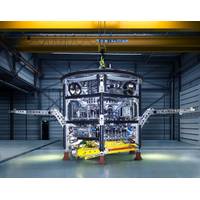
Seatools Completes FAT for DEME's Fall Pipe ROV
to conventional Fall Pipe ROVs.Another feature of the ROV is its expansive on-board survey equipment suite, employed for precise ROV positioning, monitoring operations and the environment, as well as conducting comprehensive pre- and post-surveys. To handle the vast amounts of data and complex control algorithms related to dynamic positioning, the ROV is equipped with Seatools' in-house developed multicore processing technology. The Yellowstone ROV PLC, featuring a quad-core processor, efficiently distributes tasks among individual cores, resulting in improved control task execution, particularly

Robotics: The Next Gen in Subsea Vehicles
underwater network. Some would have a GNSS receiver, to get periodic real position fixes, says Wehner.“Very large vehicles like the MUM in particular need strong sensors and algorithms for autonomous obstacle avoidance and track re-planning,” says Thyssenkrupp. “Self-adjusting control algorithms that reflect the large variety of possible vehicle configurations will support the vehicle’s concept. The project develops a mobile communication and navigation system with self-propelled LBL/USBL modems that can establish a network and dock at the MUM vehicle for transit and charging
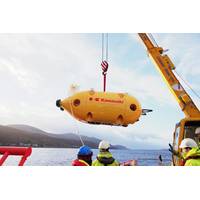
Kawasaki Tests Prototype AUV in UK Waters
, U.K. subsea scientific societies and other organizations were invited to view demonstrations. Kawasaki said it plans to pursue full-scale development of a pipeline-inspection AUV which utilizes the automated docking and other component technologies tested in Scotland, as well as control algorithms being developed in cooperation with the U.K.'s Heriot-Watt University, with the aim of commercializing the AUV by the end of FY 2020
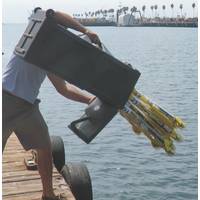
Tech File: The Apium Data Diver
The Data Diver is a new type of vehicle: a hand launched gps enabled boat that doubles as a motorized profiling system. With only two moving parts, the vehicles travel at up to 4 knots, reversing motor direction to dive vertically up to 100 meters. Apium developed these vehicles to study swarm control algorithms to perfect the simple and intuitive control of groups. With this swarming ability and the company’s rugged “drive and dive” vehicle architecture, new types of distributed data collection are possible. Apium is currently developing a product based upon this technology, with
Kongsberg Maritime: University Students Test Own DP algorithms
is unique. For the first time our PhD students have been given the opportunity to test their own work in real conditions,” said Roger Skjetne, Professor at NTNU’s Department of Marine Technology and cruise leader. “While our simulators provide a deep insight into how different DP control algorithms will affect a DP vessel dynamically, to actually have access to a vessel with an industrial-level DP system allows the PhD students and researchers at NTNU AMOS to truly understand the effects and relevance that their work has on the complete DP system and operation.” The NTNU&rsquo
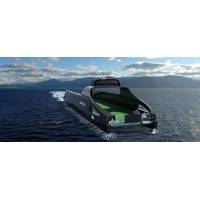
World First: Unmanned Autonomous Boat for Offshore Ops
a base-rate for operations and secure contracts for Hrönn offshore, in the near future. Hrönn will initially operate and function primarily as a remotely piloted ship, in Man-in-the-Loop Control mode, but will transition to fully automated, and ultimately autonomous operations as the control algorithms are developed concurrently during remotely piloted operations. Automated Ships Ltd will be the primary integrator, project manager and ship-owner of this world’s first fully automated and unmanned ship for commercial use. The project will leverage existing technology to develop
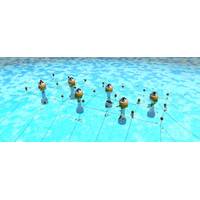
Global Maritime to Support EU Wave Energy Project
and which will reduce peak loads at mooring and hull connections. This will improve structural survivability and reduce mooring line strength requirements and costs. Other technologies that will be tested and de-risked through OPERA include a novel bi-radial turbine and new predictive control algorithms. The cost-reduction innovations will initially undergo laboratory testing at the Mutriku Shoreline Wave Power Plant in Spain. As well as Global Maritime, OPERA consortium members consist of TECNALIA (Spain) who are the project coordinators of the consortium; OCEANTEC (Spain); the Biscay
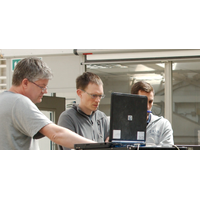
CoPilot Retrofitted onto Falcon ROV
Falcon systems. Professor Yvan Petillot, Head of Research at the Sensors, Signals, and Systems Institute, commented, “SeeByte’s CoPilot provides us a real-time input to their navigation and waypoint engine. This means we can deploy electric manipulators and develop coupled control algorithms as well as adaptive control routines. This is a fantastic resource for our PhD students. It will also add value to our colleagues across the road on the life sciences school, helping them conduct repetitive geo-located surveys.” CoPilot is an advanced, easy-to-use, plug-and play

AMS Secures $3.5M to Fund Autonomous Ocean Monitoring
will involve a heterogeneous network of unmanned systems,” Carrig said. “The surface component of this network has historically been overlooked due to the particular challenges found in maintaining a commandable, responsive presence there.” AMS has built upon recent advances in control algorithms and naval architecture to address that shortfall. By providing an ultra-long duration, power-positive, and faster-than-surface-current data collection capability, the Datamaran is a breakthrough technology. The round includes participation from the Clean Energy Venture Group (CEVG)
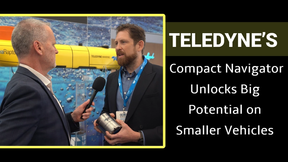
 February 2025
February 2025




